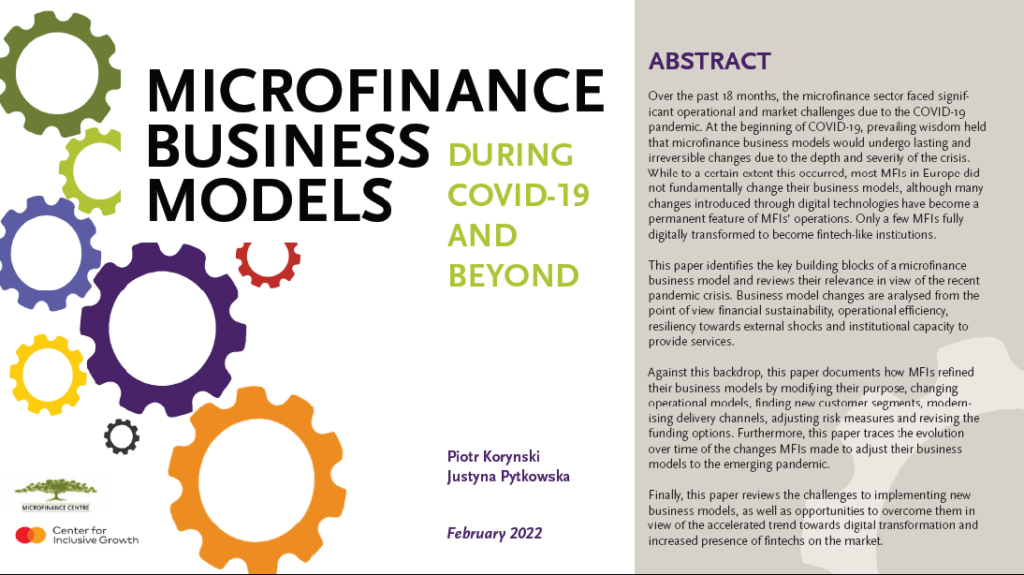Microfinance Business Models
The paper identifies the key building blocks of a microfinance business model and reviews their relevance in view of the recent pandemic crisis. The changes to the business models are analysed from the point of view financial sustainability, operational efficiency, resiliency towards external shocks and institutional capacity to provide services. Against this backdrop, this paper documents how MFIs refined their business models by modifying their purpose, changing operational models, finding new customer segments, modernising delivery channels, adjusting risk measures and revising the funding options. Furthermore, this paper traces the evolution over time of the changes MFIs made to adjust their business models to the emerging pandemic.
Finally, this paper reviews the challenges to implementing new business models, as well as opportunities to overcome them in view of the accelerated trend towards digital transformation and the increased presence of fintechs on the market.

Sponsors:
The project is implemented as part of the partnership between Mastercard Center for Inclusive Growth and Microfinance Centre for a new international support programme for small businesses and microfinance institutions in Europe and Central Asia. The partnership will enable micro-finance institutions to pivot, adapt and embrace digitization.

